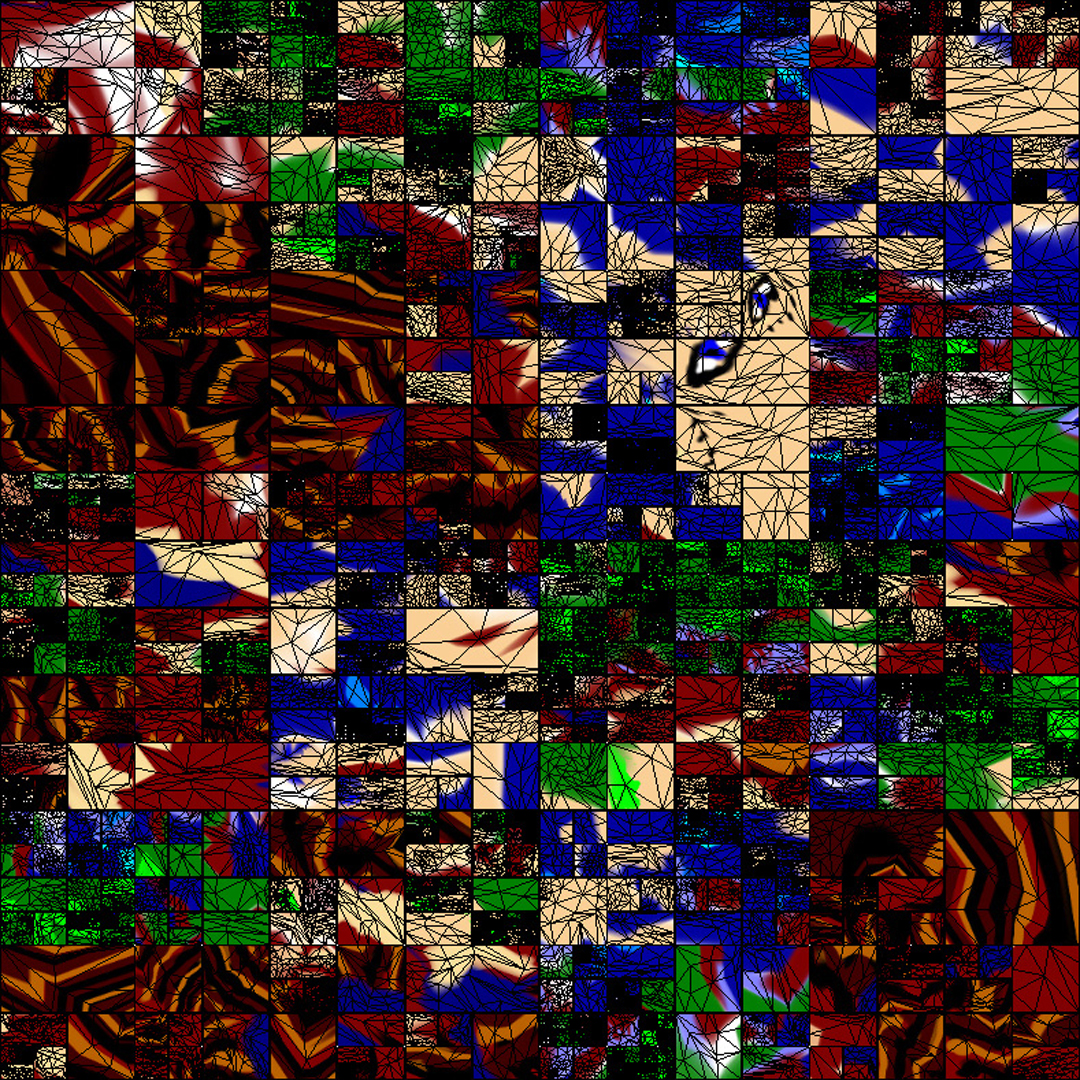“Painting detail” by Carr and Hart
Conference:
Type(s):
Title:
- Painting detail
Presenter(s)/Author(s):
Abstract:
Surface painting is a technique that allows a user to paint a texture directly onto a surface, usually with a texture atlas: a 1:1 mapping between the surface and its texture image. Many good automatic texture atlas generation methods exist that evenly distribute texture samples across a surface based on its area and/or curvature, and some are even sensitive to the frequency spectrum of the input texture. However, during the surface painting process, the texture can change non-uniformly and unpredictably and even the atlases are static and can thus fail to reproduce sections of finely painted detail such as surface illustration.We present a new texture atlas algorithm that distributes initial texture samples evenly according to surface area and texture frequency, and, more importantly, maintains this distribution as the texture signal changes during the surface painting process. The running time is further accelerated with a novel GPU implementation of the surface painting process. The redistribution of samples is transparent to the user, resulting in a surface painting system of seemingly unlimited resolution. The atlas construction is local, making it fast enough to run interactively on models containing over 100K faces.
References:
1. ALLIEZ, P., MEYER, M., AND DESBRUN, M. 2002. Interactive geometry remeshing. Proc. SIGGRAPH 2002, ACM Trans. on Graphics 21, 3, 347–354. Google ScholarDigital Library
2. BALMELLI, L., TAUBIN, G., AND BERNARDINI, F. 2002. Space-optimized texture maps. In Eurographics, 411–420.Google Scholar
3. BENSON, D., AND DAVIS, J. 2002. Octree textures. Proc. SIGGRAPH 2002, ACM Trans. on Graphics 21, 3, 785–790. Google ScholarDigital Library
4. CARR, N. A., AND HART, J. C. 2002. Meshed atlases for realtime procedural solid texturing. ACM Trans. on Graphics 21, 2, 106–131. Google ScholarDigital Library
5. CARR, N. A., HALL, J. D., AND HART, J. C. 2003. GPU algorithms for radiosity and subsurface scattering. Proc. Graphics Hardware 2003 (July), 51–59. Google ScholarDigital Library
6. DEBRY, D., GIBBS, J., PETTY, D. D., AND ROBBINS, N. 2002. Painting and rendering textures on unparameterized models. Proc. SIGGRAPH 2002, ACM Trans. on Graphics 21, 3, 763–768. Google ScholarDigital Library
7. DESBRUN, M., MEYER, M., AND ALLIEZ, P. 2002. Intrinsic parameterizations of surface meshes. Computer Graphics Forum 21, 209–218.Google ScholarCross Ref
8. FLETCHER, R. 1987. Practical Methods of Optimization. John Wiley & Sons, New York. Google ScholarDigital Library
9. FLOATER, M. S. 1997. Parametrization and smooth approximation of surface triangulations. Computer Aided Geometric Design 14, 4, 231–250. Google ScholarDigital Library
10. FLOATER, M. S. 2003. Mean value coordinates. Comput. Aided Geom. Des. 20, 1, 19–27. Google ScholarDigital Library
11. GARLAND, M., WILLMOTT, A., AND HECKBERT, P. S. 2001. Hierarchical face clustering on polygonal surfaces. In Proceedings of the 2001 Symposium on Interactive 3D Graphics, 49–58. Google ScholarDigital Library
12. GU, X., GORTLER, S. J., AND HOPPE, H. 2002. Geometry images. Proc. SIGGRAPH 2002, ACM Trans. on Graphics 21, 3, 355–361. Google ScholarDigital Library
13. HANRAHAN, P., AND HAEBERLI, P. E. 1990. Direct WYSIWYG painting and texturing on 3D shapes. In Proc. SIGGRAPH 1990, vol. 24:4, 215–223. Google ScholarDigital Library
14. IGARASHI, T., AND COSGROVE, D. 2001. Adaptive unwrapping for interactive texture painting. Symposium on Interactive 3D Graphics 2001, 209–216. Google ScholarDigital Library
15. KARYPIS, G., AND KUMAR, V. 1998. Multi-level algorithms for multi-constraint graph partitioning. Supercomputing 1998. Google ScholarDigital Library
16. LÉVY, B., AND MALLET, J.-L. 1998. Non-distorted texture mapping for sheared triangulated meshes. Proc. SIGGRAPH 98, 343–352. Google ScholarDigital Library
17. LÉVY, B., PETITJEAN, S., RAY, N., AND MAILLOT, J. 2002. Least squares conformal maps for automatic texture atlas generation. Proc. SIGGRAPH 2002, ACM Trans. on Graphics 21, 3, 362–371. Google ScholarDigital Library
18. LLOYD, S. P. 1982. Least squares quantization in PCM. IEEE Trans. Inform. Theory 28, 129–137.Google ScholarDigital Library
19. MAILLOT, J., YAHIA, H., AND VERROUST, A. 1993. Interactive texture mapping. In Proc. SIGGRAPH 93, 27–34. Google ScholarDigital Library
20. SANDER, P. V., SNYDER, J., GORTLER, S., AND HOPPE, H. 2001. Texture mapping progressive meshes. SIGGRAPH 2001, 409–416. Google ScholarDigital Library
21. SANDER, P. V., GORTLER, S. J., SNYDER, J., AND HOPPE, H. 2002. Signal-specialized parametrization. Proc. Eurographics Rendering Workshop (July), 87–98. Google ScholarDigital Library
22. SANDER, P. V., WOOD, Z. J., GORTLER, S. J., SNYDER, J., AND HOPPE, H. 2003. Multi-chart geometry images. In Proceedings of the Eurographics/ACM SIGGRAPH symposium on Geometry processing, Eurographics Association, 146–155. Google ScholarDigital Library
23. SHEFFER, A., AND HART, J. C. 2002. Seamster: Inconspicuous low-distortion texture seam layout. Proc. Visualization 2002, 291–298. Google ScholarDigital Library
24. SIMON, H. D. 1991. Partitioning of unstructured problems for parallel processing. Computing Systems in Engineering 2, 135–148.Google ScholarCross Ref
25. SLOAN, P.-P. J., WEINSTEIN, D. M., AND BREDERSON, J. D. 1998. Importance driven texture coordinate optimization. Computer Graphics Forum 17, 3, 97–104.Google ScholarCross Ref




